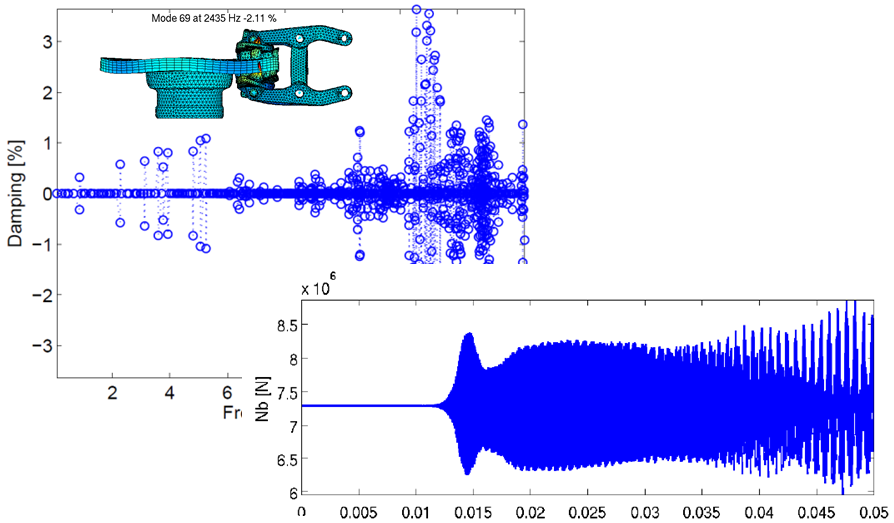A design tool for railway brake squeal
AcouFren was a collaborative project sponsored by ADEME (the french agency for energy and environment) and steered by the SNCF (the french railway agency) to improve the understanding of squeal occurrences as function of braking pad designs. The brake pad market is a multi-million EUR yearly market for the TGV only, in which noise performance specifications are tightening for environmental reasons. The squeal noise can indeed attain 120 dB in the bogie vicinity. The project involved several main actors in the domain from industry and academia, SNCF, Faiveley Transport, Alstom, Bombardier, IFSTTAR, ECL-LTDS, ENPC, Vibratec, and SDTools.
The main outcomes were a large experimental database and a software package developed by SDTools (see presentation of AcouFren software ). The software provides a complete simulation process from model generation to acoustic post-treatment, including
- parametric meshing of simplified brake pad finite element models
- assembly of the full brake model with advanced pad/disc interface remeshing (interface mesh compatibility handling) (the targets are TGV and AGC models with 1 to 1.5 million DOF)
- non-linear static computations
- complex mode computation with a control on convergence based on the residue iteration method
- transient simulation of squeal instability (up to 0.5s simulated) based on reduced model developed by SDTools
- post-processing providing cutting edge information at several levels : shape of the pressure fields through acoustic BEM coupling, potential instabilities, limit cycle amplitudes, noisy shape/frequency identification, component wise energy distribution, and opens the door to refined parametric analysis of the underlying mechanical behavior of squeal with realistic models

Railway brake |

Stability prediction and transient simulation |
Each step was interfaced through a Graphical User Interface (GUI), offering post-processing capabilities and automatic reporting.
The use of the latest SDT functionalities regarding data handling (advanced use of HDF5 and other out-of-core features), unsymmetric system resolution (interfacing of the latest PARDISO libraries from INTEL), Java GUI strategies, and formatted image caption strategies were exploited along with the latest SDT extensions on
- nonlinear transient simulation
- remeshing through GMSH and TetGen calls and mesh morphing within SDT
- model reduction
The final software was packaged for industrial deployment using the MATLAB Compiler. A pre-computed database for the TGV and AGC brake models was built to allow optimized studies of brake pads effect on squeal.
Communications on the project
